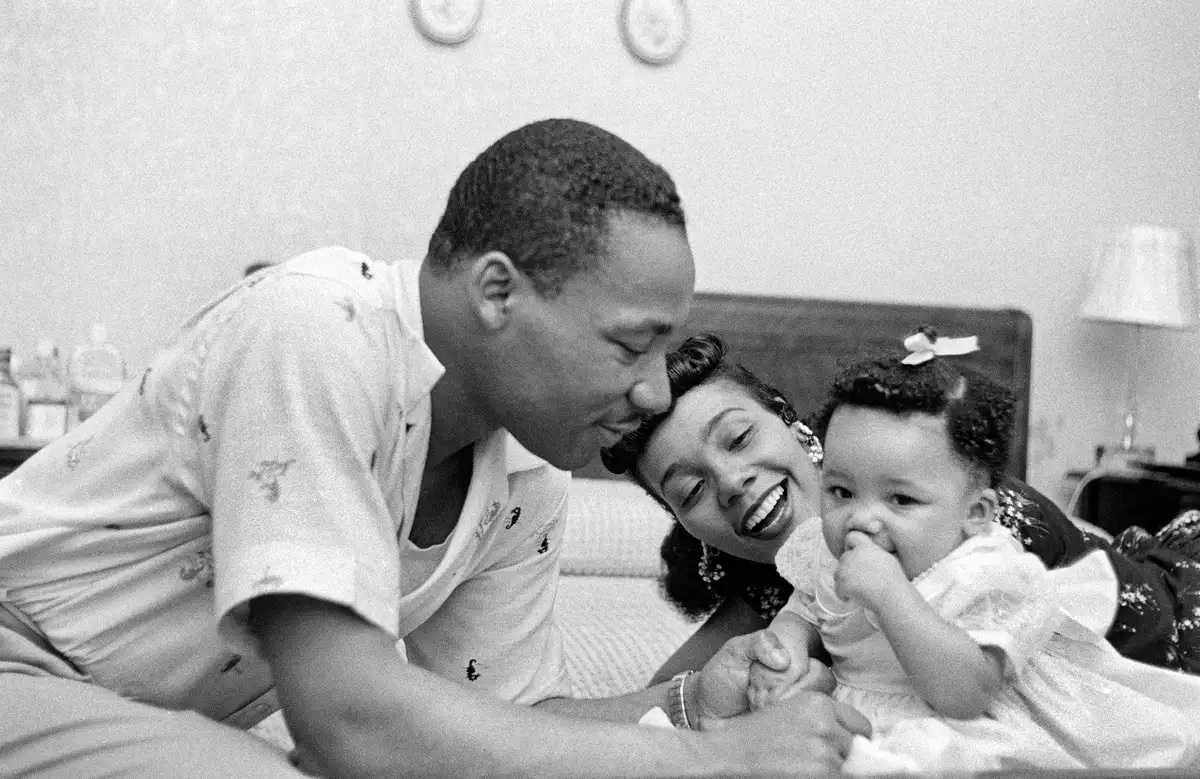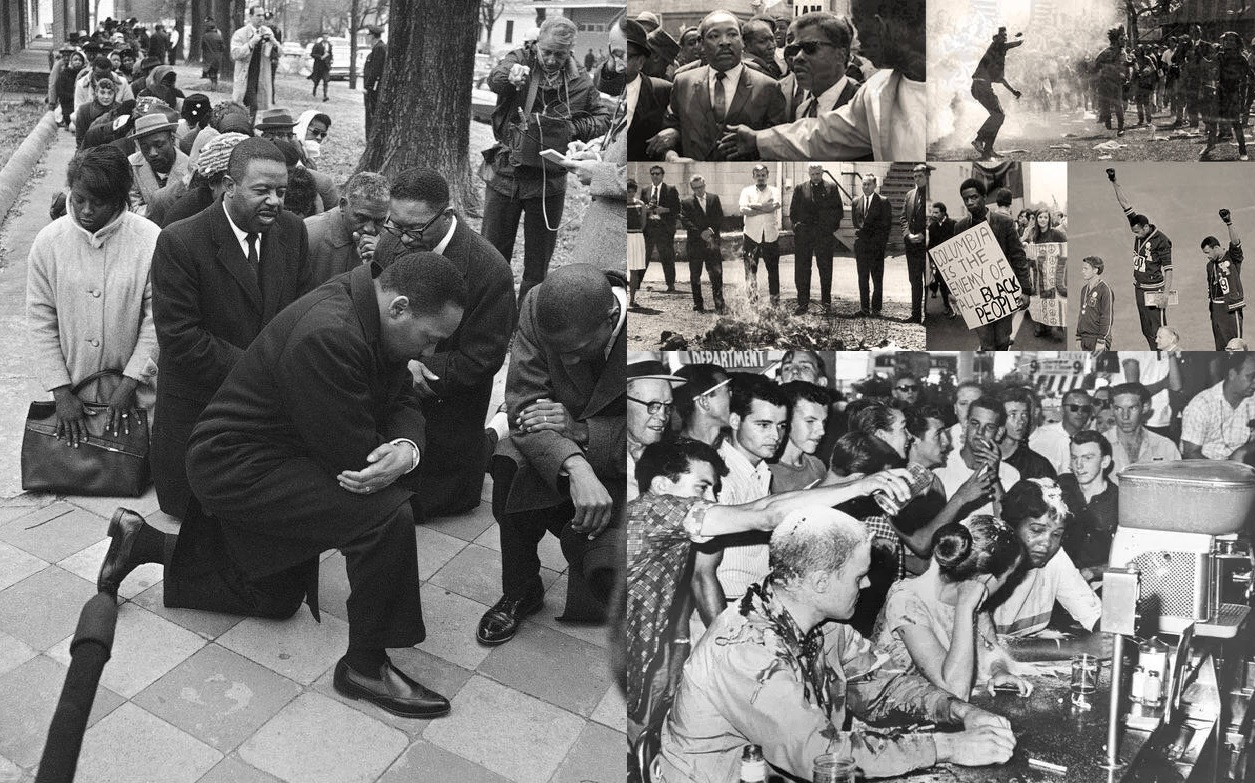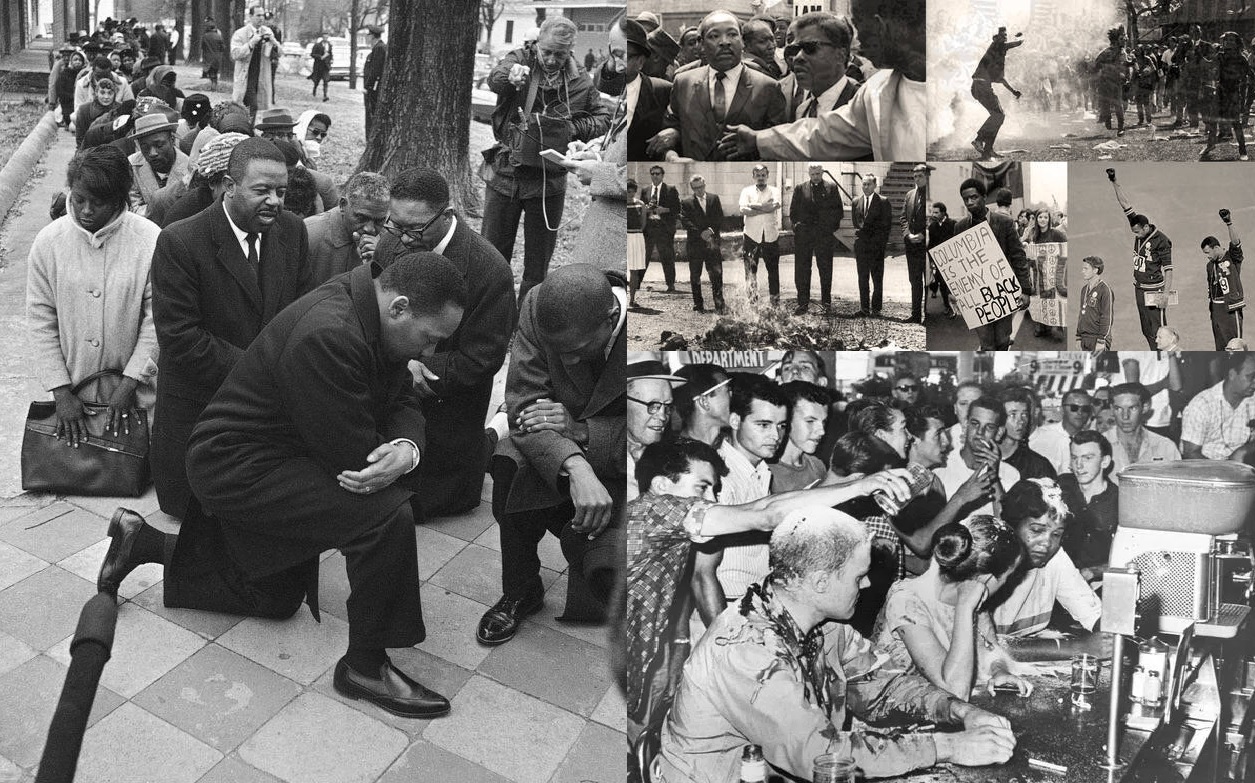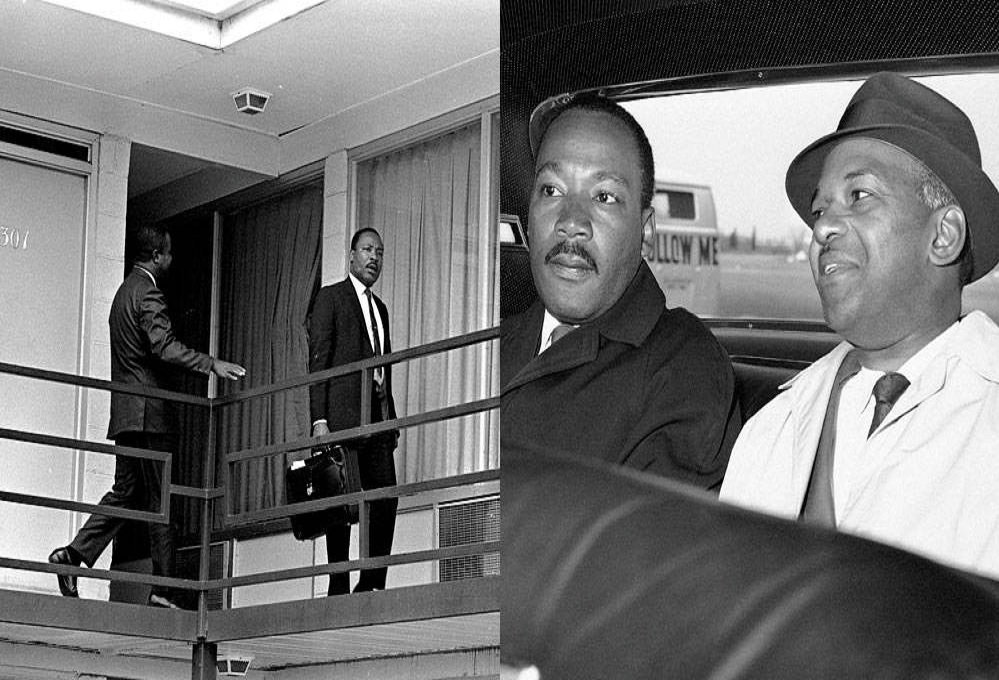In this interesting article you will learn who was martin luther king, a man who fought for his dream, until they took his life. Surprise yourself with the life of this activist pastor, entering now here!
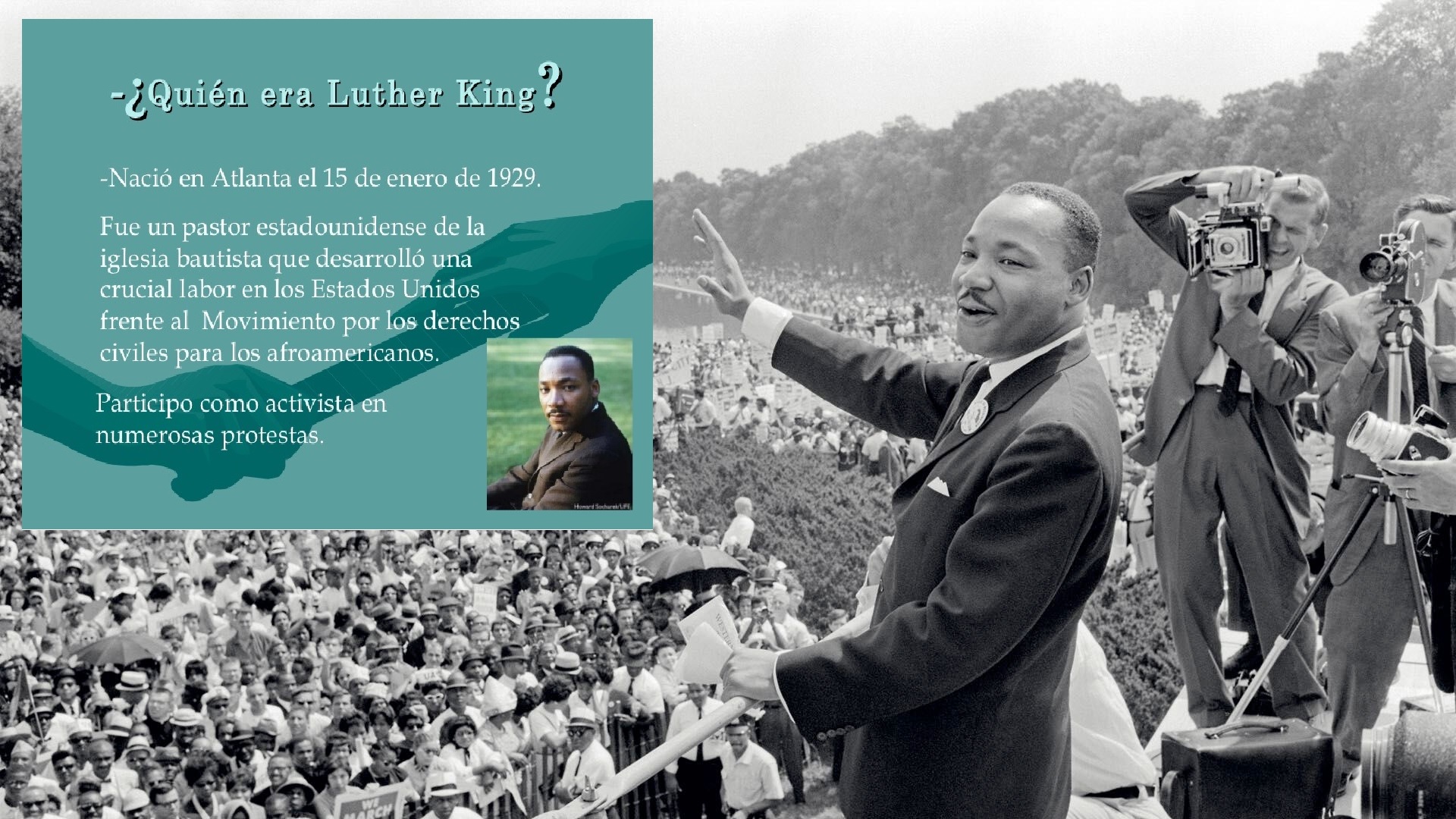
Who was Martin Luther King?
Martin Luther King was a minister and pastor of the American Baptist Church, well known for his great career as an activist and leader of the civil rights movement for Afro-descendants in North America. He also actively participated in other civil and social struggles such as:
- The Labor Movement in the United States.
- Movement for nonviolence in the United States.
- The Civil Rights Movement in the United States.
- In a large number of demonstrations in protest against the war in Vietnam and against poverty in general in North America.
From his youth, Martin Luther King was a great defender of the rights of civil society in North America. He claiming through pacifist movements the main civil rights for the black population of the United States, such as: The right to vote and not to be discriminated against within civil society.
Activist for Remembered Events in American History
When asked who was Martin Luther King, it is necessary to recall his most remembered acts in history. Among them the following can be mentioned:
- Participation in the bus boycott in Montgomery, in 1955: This was a social protest that occurred in 1955 in the town of Montgomery, Alabama. Which was put to the policies of racial discrimination in the public transport system.
- Support the establishment of the Southern Christian Leadership Conference, in 1957: Or SCLC for its acronym in English. Martin Luther King became the first president of that Conference.
- Leader in the March on Washington in the fight for Jobs and Freedom, August 28, 1963: In this famous march, at the close of the protest, Martin Luther King delivers his well-known speech –I have a dream- or -I have a dream-.
From this march, public thought towards the civil rights movement spread throughout the United States. For his part, it earned King to consolidate himself as one of the greatest speakers in North American history, the march would have its reward with the result of the publication of the decrees:
- Civil Rights Act of 1964.
- Y Voting Rights Act of 1965.
In which most of the claims made for civil rights were achieved. The activity in the fight to eradicate racial segregation and discrimination through violent acts; It earned King the distinction of receiving the 1964 Nobel Peace Prize.
Victim of a historical assassination of the XNUMXth century
On April 4, 1968, Martin Luther King was the victim of an assassination, considered one of the most relevant of the XNUMXth century. His murder occurs when the activist leader had channeled his fight against the Vietnam War, as well as fighting poverty in his country.
Martin Luther King dies as a victim of a firearm, in the city of Memphis, in the State of Tennessee, at the age of 39. That day in April, King was about to leave for an intimate dinner with friends.
Who was Martin Luther King? Given the above, it can be said that this black man came to occupy a place in the contemporary history of the United States of America. He recognized as one of its greatest leaders and heroes in the fight against non-violence.
Former US President Jimmy Carter awarded in 2004 and in posthumous memory to Martin Luther King: The Presidential Medal of Freedom and Gold Medal of the Congress of the United States of America.
January 15 is decreed as Martin Luther King Jr. Day, in the United States since 1986. Being a national holiday in memory of this famous American activist.
Who was Martin Luther King? - His biography
Martin Luther King Junior was born on January 15, 1929 in the North American city of Atlanta in the State of Georgia. His parents Martin Luther King and Alberta Williams King give the boy the name of Michael King Junior.
His father Martin Luther King was a pastor of the Baptist Church and the mother was the organist of said church. Both father and son were first given the name Michael, but following a family trip to Germany in 1934, they changed their names to Martin Luther.
The name change was due to the fact that the father decided to do it in honor of the protagonist of the Protestant reform, Martin Luther. Adopting both, father and son, the name of the German reformer in the English language, that is, Martin Luther.
We invite you to enter the following link to learn about the Protestant Reformation: What is it? causes, protagonists. In this article you will find interesting information about this ideological movement that flourished in Europe in the XNUMXth century, as well as find out who its main protagonists were.
One of these protagonists was a German reformist who you can meet by entering the article: Martin Luther: Life, work, writings, legacy, death and more. Where you will learn about the life and work of the man who exhorted the Christian church to return to his original teachings, marking a milestone in history for leaving a legacy as the main promoter of the Protestant Reformation.
early years, childhood
Returning to the biography of Martin Luther King Junior, it can be said that he was the second of three brothers. His eldest was his sister Christine King Farris, and his youngest brother would be Alfred Daniel Williams King.
At the age of six, still a child, he had to live an experience of racism against himself. And it is that two small white children known to him rejected him by not allowing him to play with them.
At the age of five in 1934 he stopped being called Michael to adopt the name under which he was known in the future, Martin Luther King, in memory of Martin Luther. In 1939 the Baptist church where he used to congregate plays the movie Gone with the Wind, little Martin sings in the choir for said presentation.
His studies
Martin Luther King Junior completed his basic studies at Booker T. Washington High School in Atlanta. He dropped out of ninth and twelfth grade or year, so he did not get a high school degree.
Even so, in 1944 at the age of 15 he entered Morehouse College located in Atlanta, Georgia. This is a private university, which was originally created only for the African-American population.
He graduated from Morehouse College University with a BA in Sociology in 1948. He later entered Crozer Theological Seminary, located in Chester, Pennsylvania.
On June 12, 1951, seminarian King graduated with a degree in theology. In September of the same year, Martin Luther King Junior enrolled at Boston University to pursue a Doctorate in Systematic Theology. On June 5, 1955, King graduated as a Doctor of Philosophy
Marriage and children
Martin Luther King Jr. married Coretta Scott on June 18, 1953. The wedding ceremony took place in the garden of the Scott home, located in the Heiberger community of Perry County, Alabama.
King met his wife Coretta while he was in graduate school at Boston University. Coretta Scott King (1927 – 2006), studied music and was a composer. Although her main occupation was to be a leading activist, like her husband, for civil rights.
Coretta was a tireless defender of the equality of the African-American people in the 60s. Her occupation as an activist leader was carried out in parallel with her job as a composer and singer. Even her music was incorporated into the movements she carried out for civil rights.
Of the married couple King Scott, four children were born, two girls and two boys, namely and in order of birth:
- Yolanda Denise King (1955 – 2007), was an American activist and actress.
- Martin Luther King III (October 23, 1957), followed in his father's footsteps as a human rights defender as well as being a community activist in the United States.
- Dexter Scott King (January 30, 1961), also an activist for the civil rights of Americans.
- Bernice Albertine King (March 28, 1963), is currently a Minister of the Ebenezer Baptist Church and CEO of the King Center.
Who was Martin Luther King? – Minister and activist
Martin Luther King Jr., having already graduated in theology, is ordained Pastor and Minister of the Dexter Avenue Baptist Church, Montgomery, Alabama, being only 25 years old.
King began his ministry at a time when the south of his country was experiencing acts of violence due to the racial segregation of blacks. A racism so violent, that it led to the death of three black Americans in 1955:
- The militant and civil rights activist Lamar Smith.
- A 14-year-old teenager named Emmett Till.
- Pastor and activist George W. Lee.
This racist fact and others that followed one another frequently applying violence against their black brothers. They motivated Martín in his fight as a civil rights activist.
King is arrested for civil activism
Martin Luther King led a boycott of a bus line in Montgomery in 1955. King was accompanied in this movement by Pastor Ralph Abernathy and Edgar Nixon, local director of the National Association for the Advancement of Colored People.
The cause of the boycott was due to the fact that on December 1, 1955, an African-American woman named Rosa Parks was arrested on a bus. Rosa's crime was not getting up from her seat on the bus so that a white man could sit down, thus violating Montgomery's segregation law.
The boycott demonstration against Montgomery's public transportation system went on for 382 days, and Martin Luther King ended up being arrested. All those days were of great tension throughout the city.
Because the segregationist white population carried out violent and terrorist actions, in order to frighten blacks. Terrorist acts that can be mentioned among others, the attacks of January 30, 1956 with incendiary bombs against:
- King's family home.
- Ralph Abernathy's house.
- The seats of four churches.
The end of the boycott came on November 13, 1956, by decision of the Supreme Court of North America. Which declared illegal the social policy of segregation of Montgomery, which was fulfilled in the public transport system of buses, restaurants, schools and other public places.
King at the founding of the SCLC
Martin Luther King in 1957 supported the creation of the Southern Christian Leadership Conference or the SCLC for the acronym in English. Which is an organization for peace and of which King would be its first president.
Position that he held from January 10, 1957 until the day of his assassination on April 4, 1968. This organization was created with the aim of organizing all African-American churches, so that they actively support protest movements peace for civil rights.
King at demonstrations or protests sponsored by the Southern Christian Leadership Conference, adopted the philosophy of peaceful civil disobedience. Described by the American writer, poet and philosopher, Henry David Thoreau and the same one that Gandhi had successfully applied in India.
King's embrace of peaceful civil disobedience came after receiving advice from civil rights activist Bayard Rustin.
Author of the book “Road to freedom; Montgomery's story
In 1958, Martin Luther King wrote the book “Road to Freedom; Montgomery's story. Subsequently, and because of the hatred generated by the publication of his book, King exposes his opinion on the issue of racial segregation and unleashed inequality, saying:
“Men often hate each other because they are afraid of each other; they are afraid because they do not know each other; they do not know each other because they cannot communicate; they cannot communicate because they are separated.
At his book signing event in a Harlem bookstore on September 20, 1958, King was injured with a paper knife. The cause of his injury was a black woman named Izola Curry, who attacked him for considering him a communist leader.
Finally, Izola was tried as a woman with mental problems and King was miraculously saved from death, as the knife grazed the aorta. King, as a man who believes in God, forgave his attacker and used the incident as testimony as a denunciation of the intolerance and violence that exists in the society of his country, saying:
“The pathetic aspect of this experience is not the injury of an individual. It demonstrates the climate of hatred and bitterness that so pervades our nation that these outbursts of extreme violence must inevitably arise. Today it's me. Tomorrow it could be another leader or it doesn't matter who, man, woman or child, who is the victim of anarchy and brutality. I hope that this experience ends up being socially constructive by demonstrating the urgent need for non-violence to govern the affairs of men.
A year later, King writes and publishes the book: The Measure of a Man. Where it defines what a healthy national political, social and economic society should be.
Media coverage around King and racial conflicts
King was aware that the peaceful demonstrations that he promoted in an organized way would attract the attention of the media. And he was not mistaken, the peaceful protests against the segregation policy in the south of the country and the fight for equality, as well as for the right to vote for the black population, would soon have media coverage.
A coverage that showed the world the magnitude of the conflict in the United States. Journalists and reporters, especially those on television, showed the harassment and deprivation that black citizens often suffered in the south of the country.
In the same way, they pointed out harassment and violence in their broadcasts and journalistic reports. Of which the activists and protesting leaders for civil rights were victims, part of the population that supported segregation.
All this media coverage resulted in the birth of an influx of sympathizers within public opinion, in favor of anti-segregation mobilizations. Also placing the conflict as the most relevant political issue in the United States in the sixties.
King, along with the Southern Christian Leadership Conference, successfully applied the basic strategies of peaceful civil disobedience thinking. Strategically choosing the sites and the procedure for the protest, achieving successful confrontations with the segregationist authorities.
Demonstrations against racial conflict not only attracted media attention. But also from 1961, the FBI began to monitor Martin Luther King.
Since there was the complaint that communism wanted to take advantage of the racial conflict. Wanting to infiltrate the civil rights movement in America.
Although the FBI did not find any evidence against King, they still tried to remove him from presiding over the organization of the demonstrations.
King and the FBI
In 1961, United States Attorney General Robert (Bobby) Francis Kennedy issues a written order to FBI Director J. Edgar Hoover. With the order of the Prosecutor, the FBI begins the investigation and surveillance of Martin Luther King, as well as the Southern Christian Leadership Conference.
The first year the investigations did not throw up anything of relevance. It was only in 1962 that the FBI discovered that Stanley Levinson, a very close adviser to King, had a relationship with the Communist Party of the United States.
The FBI passes this information on to the Attorney General and President John F. Kennedy. These authorities tried to talk King out of Levison, but were unsuccessful.
Since King insisted that he had no relationship with communists in the country. In response, the Director of the FBI accused him saying that King was the most lying person in the country.
For his part, King's adviser, Stanley Levinson, defended himself by saying that his relationship with communists was only professional because he was a lawyer. Thus rejecting the FBI reports against him, which indicated that he was associated with them on a personal level.
The FBI insists on discrediting King
As the FBI could not prove anything against King in terms of his political ideologies. The investigations were then diverted, now focusing on King's private life.
Without getting anything consistent, the FBI decides to abandon the investigations into King's private life and directs them towards the SCLC, as well as the Black Power movement. With embedded FBI agents within the SCLC leadership, they managed to get a March 1968 Memphis rally out of control into violence.
Director Hoover relied on this to start the smear campaign against activist leader King again. On record, by April 2, 1968, the FBI had resumed bugging King.
The FBI of the State of Mississippi on the same April 4 proposes to discredit King before his black brothers, so that they do not give him their support. That day King was murdered and the FBI maintained contact with King to keep him under surveillance at all times.
So the first to arrive on the scene when King was shot were FBI agents, who gave them first aid. People who support the theory of King's death by political conspiracy, rely on the presence of the FBI so close to the scene of the crime, to confirm their theory and the involvement of the agency in the murder.
Who was Martin Luther King? Why was he killed?
Martin Luther King as an activist who was for the civil rights of the African-American population, went to Memphis in the State of Tennessee at the end of March 1968. In order to support his black brothers and local garbage collectors, who were on strike for better treatment, equality and salary, since the 12th.
The protest that had been developing peacefully suddenly spilled over into violent actions, resulting in the death of a young black man. Martin Luther King on April 3, 1968 in a Mason temple of the Church of God in Christ gives the speech where he expresses:
“I have been to the top of the mountain. It is not really important what happens now. Some have started talking about threats. What could happen to me from one of our evil white brothers?
Like everyone else, I would like to live a long time. Longevity is important, but that's something I don't care about right now. I just want to fulfill the will of God. And he has authorized me to climb the mountain! And I have looked around me and I have seen the promised land. I may not go there with you. But I want you to know tonight that we will arrive as a people in the promised land. And I am very happy tonight. I have no fear. I am not afraid of any man. My eyes have seen the glory of the coming of the Lord!”
The day after this speech at 6:01 pm, King is assassinated by a segregationist white fanatic, on a balcony of the Lorraine Motel in Memphis, Tennessee. The murderer was James Earl Ray, who managed to shoot him from behind a bathroom window facing the balcony of the motel where King was staying.
the funeral
Martin Luther King's funeral had a massive turnout, with around 300 people present. Among which is the assistance of the Vice President of the country Hubert Humphrey, representing the American government.
King's assassination promoted various riots and public demonstrations in more than 100 cities in the country, resulting in 46 victims.
For her part, at the funeral ceremony, the widow decided that the farewell speech to her husband would be delivered by Martin Luther King himself. This was made possible by playing a recorded sermon as a pastor at Iglesia Bautista Ebenezer.
In the preaching called Drum Major, Martin Luther King asked that his funeral not be praised, but that it be said that he had always sought to serve the needy. King's friend Mahalia Jackson later sang her favorite hymn: "Take my hand, precious Lord."
Investigations after King's death
In June 1968, the alleged murderer of Martin Luther King, James Earl Ray, is arrested at London Heathrow airport. Ray was trying to board a flight with a fake Canadian passport in the name of Ramon G. Sneyd.
He is subsequently extradited to Tennessee and put on trial for the death of Martin Luther King. Ray advised by his lawyer pleads guilty to avoid the death penalty, he is sentenced to 99 years in prison, after this:
- Ray confesses that the real culprits are a man named Raoul and his brother Johnny, whom he met in Montreal, Canada. And that he was only the responsible party without knowing it.
- In 1997, Dexter and King's son interview Ray and support him to get a new trial.
- Then in 1998 Ray died.
- In 1999 King's family wins a civil suit against Loyd Jowers and other conspirators. Because in December 1993, Jowers gave details of a conspiracy involving the mob, the FBI and the US government to assassinate King. Jowers on trial is found guilty.
- After the process, the King family concludes that Ray was not the murderer.
- In 2000, the Department of Justice concludes an investigation into Jowers's statements, without evidence to prove a conspiracy.
We invite you to meet another American Christian leader, entering here: charles stanley: Biography, Ministry and much more.
